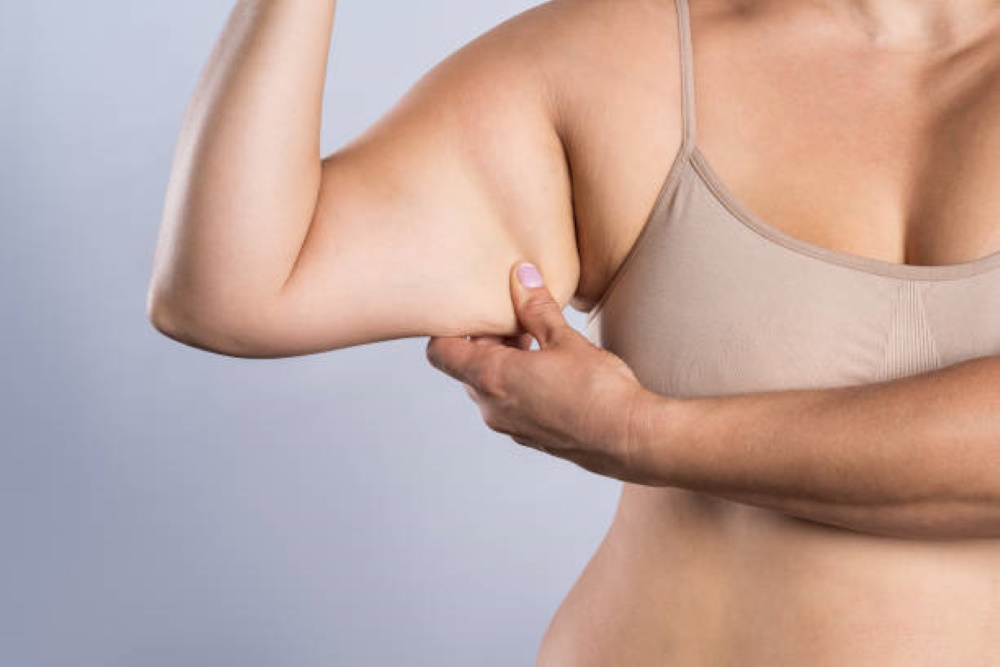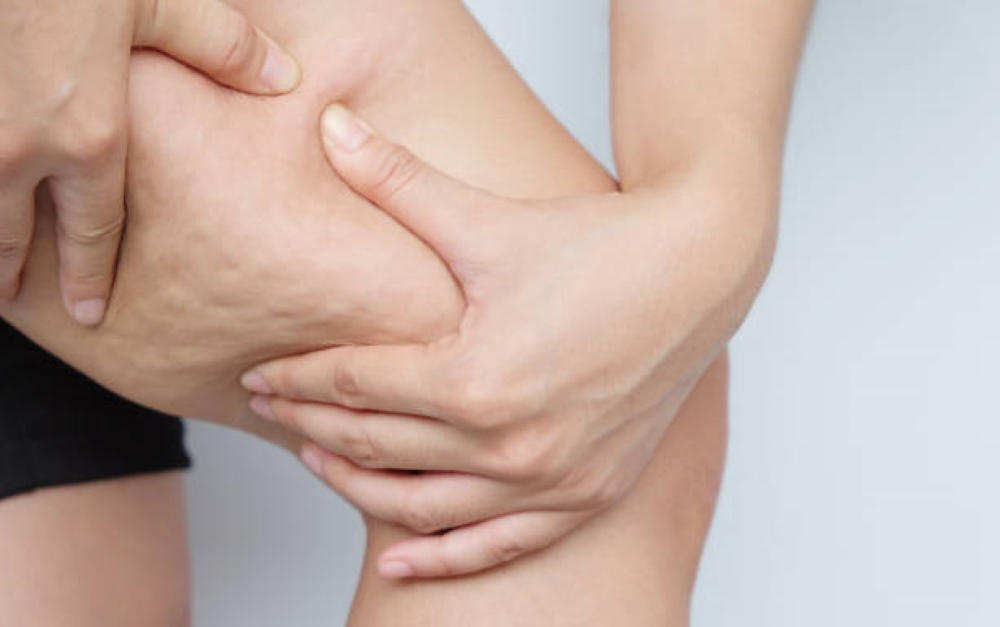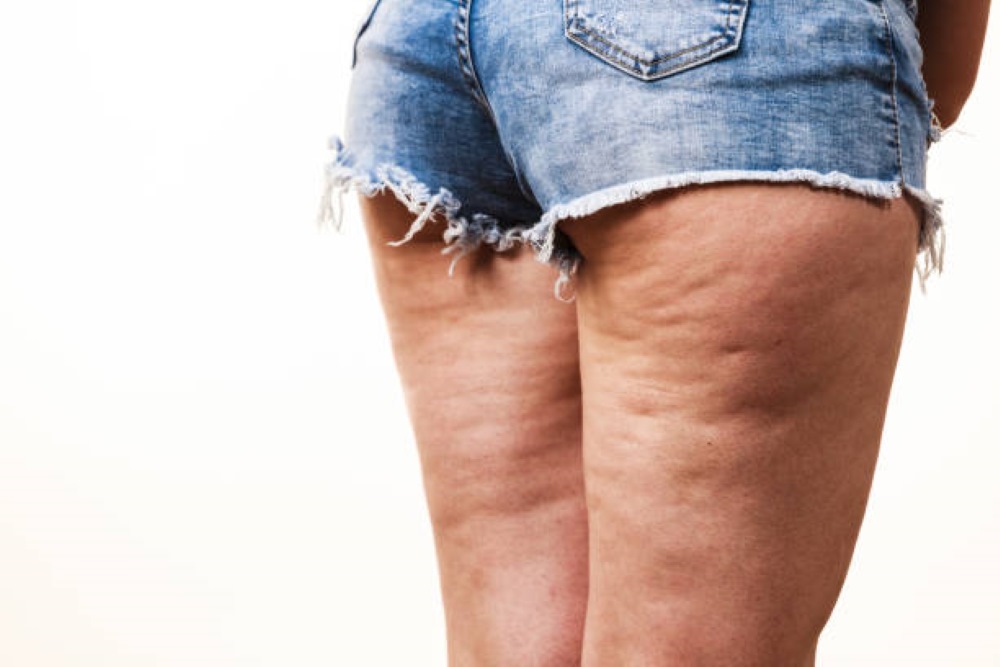Cellulite – that dreaded word that makes most of us cringe. As a common concern affecting many individuals, particularly most women, the quest to find effective treatments and remedies is never ending. From creams and lasers to lifestyle changes, the options may seem overwhelming. Fear not, for in this comprehensive guide, we delve into the world of cellulite treatments, helping you unravel the mystery behind this pesky cosmetic issue.
Key takeaways – cellulite treatments
- Cellulite is caused by excess fat deposits and can be reduced with lifestyle modifications, body contouring treatments, laser and radiofrequency therapies.
- Factors such as hormones, genetics, age and balanced diet influence cellulite formation.
Understanding cellulite – connective tissue

Cellulite is a cosmetic concern characterized by fat pressing against connective tissue, resulting in a dimpled, lumpy appearance on the skin (skin loses elasticity). While both genders can develop cellulite, women tend to experience it more frequently than men. Commonly affecting areas such as the stomach, thighs, and buttocks. The signs of cellulite include lumpy skin or dimpled skin, which may be visible all the time or only when pinching the skin.
The uneven appearance of the skin, a characteristic sign of cellulite, is caused by deep fat deposits pushing through the connective tissue beneath the skin. Factors such as blood flow, body fat, connective tissue bands, and the elasticity of the skin play a role in how much cellulite develops and how visible it becomes.
Though cellulite cannot be completely eliminated, various treatments and approaches can help reduce its appearance. These include:
- Topical solutions and creams.
- Lifestyle modifications and home remedies.
- Non-invasive body contouring treatments.
- Laser and radiofrequency therapies.
- Consulting with healthcare professionals.
Factors contributing to cellulite formation
The formation of cellulite is influenced by a variety of genetic factors such as:
- Hormonal fluctuations.
- Genetic predisposition.
- Advancing age.
- Dietary habits.
- Lifestyle choices.
Hormonal factors such as estrogen may play a significant role in the development of cellulite. It is also possible that a person’s metabolism rate, fat beneath, ethnicity, and circulatory levels may have a genetic influence on the emergence of cellulite, making some people more likely to develop it due to these and other factors alone.
As age progresses, cellulite can become more visible due to thinning skin and decreased elasticity and loose skin, which exposes the underlying rippled connective tissue beneath the skin. Diet also plays a role in cellulite formation. A healthy diet low in:
- Calories.
- Carbohydrates.
- Fats.
- Preservatives.
- Salt.
Maintaining a healthy weight and losing weight may be associated with a decrease in cellulite, which can help reduce cellulite.
Lifestyle choices, such as smoking, inadequate physical activity, and an unhealthy diet, may contribute to the formation of cellulite as well. Addressing these issues through cosmetic dermatology treatments like laser and radiofrequency therapies can help improve the appearance of cellulite.
Non-invasive body contouring treatments – eliminate fat cells

Non-invasive body contouring treatments such as cryolipolysis, ultrasound, and acoustic wave therapy target and eliminate fat cells, thereby reducing the appearance of cellulite. Cryolipolysis, in particular, freezes the fat cells beneath the skin to combat cellulite. Deep massage techniques used in some body contouring treatments can also help break down fat deposits and improve cellulite appearance.
Primarily used on the abdomen and thighs, ultrasound is a non-invasive procedure that employs sound waves to target and reduce fat. For optimal results, it’s advisable to combine ultrasound with another cellulite treatment.
Acoustic wave therapy, on the other hand, reduces the appearance of cellulite by vibrating the connective tissue in areas of the body prone to cellulite. This treatment has been demonstrated to increase collagen production, which leads to better skin appearance, texture, and elasticity. The results are evident after several weeks of use. However, several treatments are necessary to achieve the desired results.
Laser and radiofrequency therapies

Laser and radiofrequency therapies, including cosmetic and laser therapy, are non-surgical skin rejuvenation methods that utilize advanced technology to improve skin texture and elasticity. While laser therapy modifies the skin using light energy, radiofrequency therapy applies radio waves to heat the skin’s deeper layers. These therapies can help diminish wrinkles, enhance the skin’s overall appearance, and stimulate collagen production.
Specifically for cellulite, laser treatments, like Cellulaze, a laser treatment, is designed to break up the tough bands under the skin that cause cellulite to be visible. Laser and radiofrequency treatments employ a combination of radiofrequency technology, infrared light, and diode laser energy.
Topical solutions and creams for the appearance of cellulite
Temporarily reducing the visibility of cellulite, topical solutions and creams work by firming the skin and increasing moisture, making it appear smoother and firmer. Daily application is necessary to achieve and maintain the desired results. Some of these creams contain caffeine, which can enhance blood flow to the area and act as a diuretic, potentially altering the water content of the fat and thereby reducing the appearance of cellulite.
However, it is important to be aware of the potential risks associated with using topical solutions and creams, as some individuals have experienced adverse effects such as tachycardia. To observe a noticeable reduction in cellulite appearance, these solutions and cellulite cream must be applied consistently for a minimum of six months.
While topical solutions and creams may provide temporary relief, it is crucial to remember that they do not remove cellulite but instead temporarily diminish its appearance.
Lifestyle changes and home remedies
Despite certain topical, oral, and injectable applications not being proven effective in reducing cellulite, lifestyle modifications and home remedies like exercise, dry brushing, and dietary alterations might aid in minimizing its appearance.
A combination of aerobic exercise habits and strength training is recommended for reducing cellulite. Dry brushing, a technique involving the use of a natural plant lotion or body brush to lightly exfoliate the skin, can promote blood and lymph circulation, exfoliate dead skin cells, and encourage new cell growth. Additionally, dry brushing may support detoxification processes and stimulate the nervous system.
Consultation with healthcare professionals
To ensure the safety and effectiveness of the chosen cellulite treatment, it’s advisable to consult healthcare professionals.
Available treatment options include:
- Non-invasive body contouring treatments.
- Laser and radiofrequency therapies.
- Topical solutions and creams.
- Lifestyle changes and home remedies.
Together with your healthcare provider, you can determine the best course of action to reduce the visibility of cellulite and decide on the most appropriate way to treat cellulite.
Summary
In summary, cellulite is a common cosmetic concern that affects many individuals, particularly women. While there is no definitive cure for cellulite, various treatments and approaches can help reduce its appearance. From non-invasive body contouring treatments and laser therapies to topical solutions and lifestyle changes, the options are abundant. It is crucial to consult with healthcare professionals to ensure the chosen approach is safe and effective for your specific needs.
Embark on your journey to smoother, firmer skin by exploring the multitude of cellulite treatments available. With the right combination of treatments and lifestyle adjustments, you can minimize the appearance of cellulite and boost your confidence.
Frequently asked questions
What is cellulite caused by?
Cellulite occurs by the accumulation of fat cells pushing up against the skin and long, tough cords pulling down. This creates an uneven surface or dimpling. Hormonal factors also play a role, as well as genetics which determine skin structure, texture and body type.
Can you really get rid of cellulite?
Unfortunately, you cannot completely get rid of cellulite. However, when cellulite forms you can reduce its appearance by eating a healthy diet, exercising regularly and pursuing treatments.
Are topical solutions and creams a permanent solution for cellulite?
Topical solutions and creams are not a permanent solution for cellulite, as they only provide temporary relief and must be applied consistently for a minimum of six months to observe results.
What lifestyle changes can help minimize cellulite appearance?
Regular exercise, strength training, dry brushing and healthy eating can all help to with weight loss reduce the appearance of cellulite.
